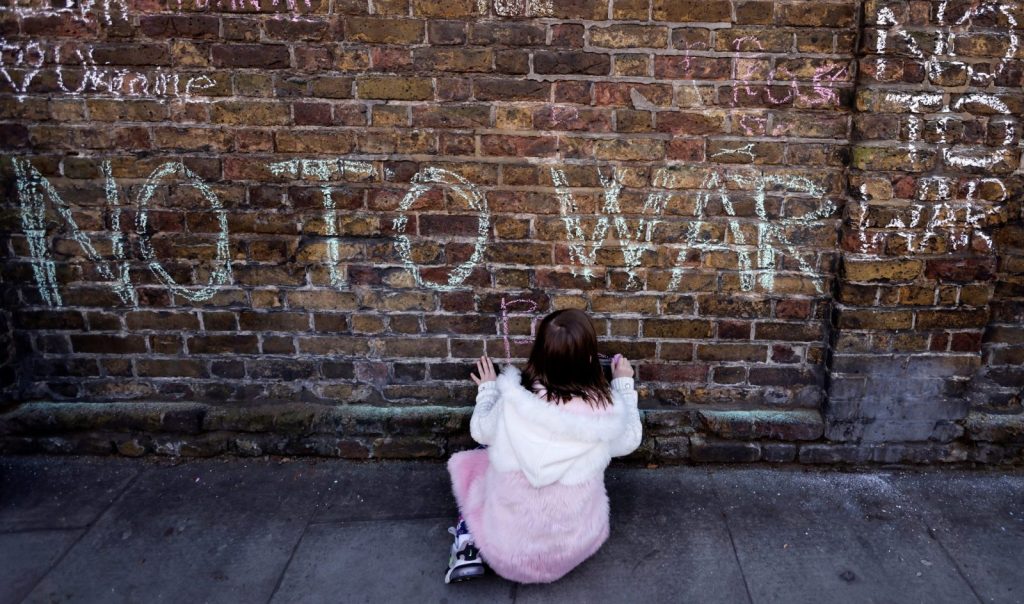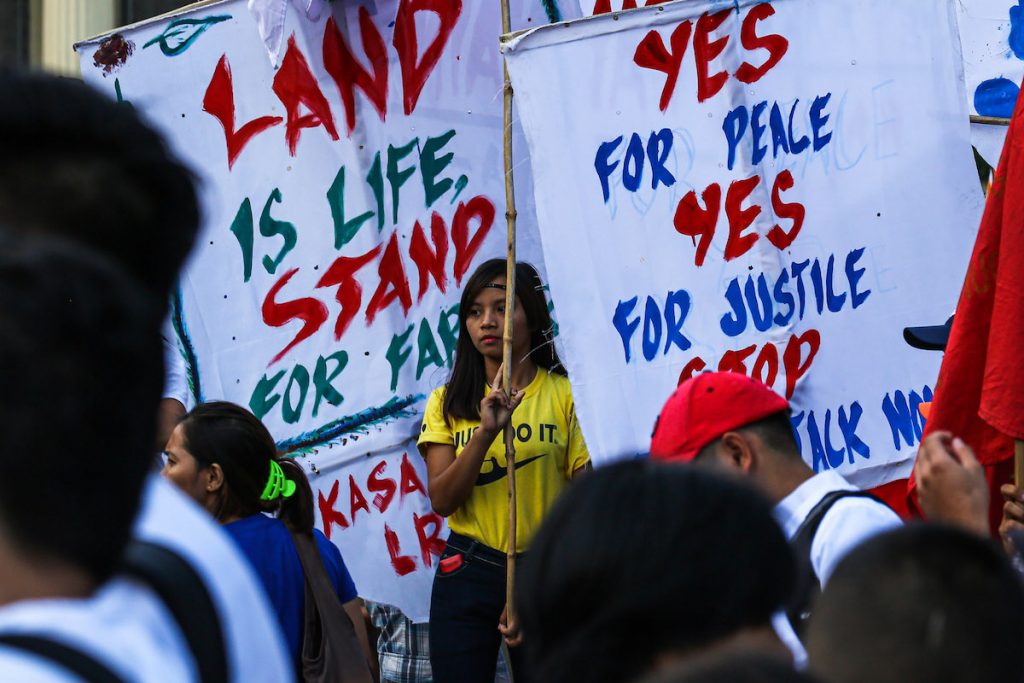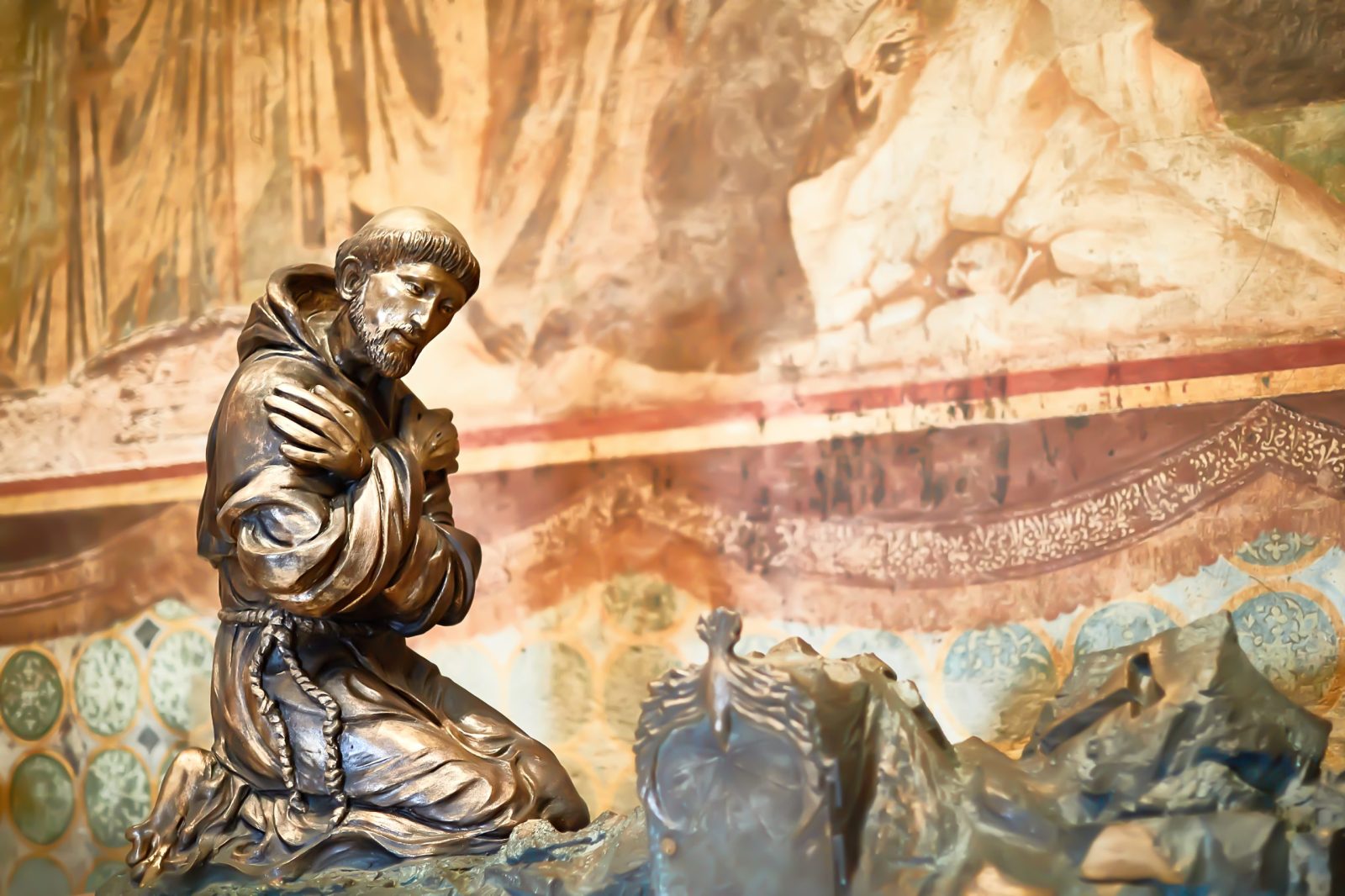While the world, throughout its history, has faced many crises, many dark chapters and suffered many wounds, recent years appear to have ushered in a new dark age across the world.
The rise of far right populism and far left militancy, of nationalism, extremism and intolerant secularism in various forms across the Western world, from North America to Europe and across Asia and beyond, has shaken well-established pillars of stability, foundations of tradition, accepted norms and truths and values.
The COVID-19 pandemic devastated millions of lives, through death, long-term sickness, economic hardship, mental health challenges and the grief faced by so many who lost loved ones.
The virus did not discriminate — rich and poor, developed and less developed, free and oppressed countries all suffered.
Wealthier, developed and democratic countries were better able to weather the storm, with the resources to provide furloughs and welfare benefits for those unable to go to work due to lockdowns, to strengthen medical care, to invest in research into vaccines and to produce and disseminate the vaccines.
For countries, already in poverty, such as my own nation of Myanmar, countless numbers of people died without treatment, without a vaccine and in destitution. And with no leader held to account, least of all the leaders of China where the virus escaped, the carnage was unleashed and the pandemic began.
But the whole world suffered.
And now today we face a truly horrendous, evil war inflicted on the people of Ukraine with absolutely no justification whatsoever.
A war that was unprovoked, unjustified, unjustifiable and inhumane. A war that threatens not only the people of Ukraine, but the whole world. A war that has inflicted suffering on Ukrainians first and foremost, but has also led to the grief of Russian mothers, fathers, brothers and sisters who see their loved ones forced to serve as Russian soldiers returning home in body bags.


Not all wars are clear-cut. Many are complex, with wrong on both sides. It is a war between authoritarianism and freedom, between dictatorship and democracy and between darkness and light, lies and truth.
And then we turn to the region in which we are born and brought up, in which we have always and will always live and which we will always love: Asia.
As president of the Federation of Asian Bishops’ Conferences, I see the challenges and wounds across the continent.
North Korea remains one of the world’s most closed countries, ruled by one of the world’s most repressive regimes, now facing the challenges of COVID-19 only recently admitted because it has a regime that rules by lies and by covering the truth.
Sri Lanka, an island that has already endured the wounds of civil war and then more recently terrorism, now engulfed in political turmoil.
Even among the region’s fragile democracies, religious intolerance is a growing dark cloud, in Indonesia and Malaysia.
The Philippines has recently elected to replace Rodrigo Duterte, a populist leader who allowed human rights violations with impunity, with Ferdinand Marcos Jr., the son of the late dictator. Democracy faces a struggle for survival against resurgent authoritarianism.
In China, we see an assault on human rights the like of which we have not seen since the Tiananmen Square massacre, the 33rd anniversary of which we recently commemorated.
We see the genocide of the Uyghurs, continued atrocities in Tibet, the crime against humanity of forced organ harvesting, a severe crackdown on civil society, lawyers, local and foreign journalists, bloggers, severe persecution of Christians, increasing threats to Taiwan and the dismantling of Hong Kong’s freedoms.


The peoples of Myanmar, for over a year, have endured a triple crisis, with suffering as a consequence of COVID-19, coup, and conflict. They face a human rights, humanitarian, economic and political catastrophe.
And in the midst of this crisis, the Church is again enduring its Calvary. So many of our churches have been bombed, desecrated or damaged, people arrested, tortured, killed. Houses and villages burnt down.
So to ask me to speak about “Hope in Times of Crisis” is both apposite and appropriate, as well as challenging.
Brothers and sisters, I have painted a picture of some of the world’s woes so far. And we all know, there are more issues I could touch on. I have not spoken about the Middle East, Yemen, Sudan, Afghanistan or climate change.
I want to address the question of “hope” and not only focus on crisis. For we, as people of faith, are an Easter people, and that means we are, whatever the circumstances, a people of hope.
Where does our hope come from and how do we sustain it?
Since Sept. 11, 2001, the world’s attention, or at least America’s, has been focused on the war on terrorism. One of Pope John Paul II’s responses to this horrific attack was to summon an international assembly of almost 200 religious leaders from 12 of the world’s religions in Assisi, Italy, on Jan. 24, 2002. By joining others in prayer, the pope seeks peace for a world plagued by suffering, hatred and violence.
The pope’s message was clear: there can be no peace without forgiveness. This may be difficult for many to hear, and this may explain why there was little coverage of the “Assisi Day of Prayer” in the American media.
Of course there is anger, apprehension and fear in reaction to the events of Sept. 11. These are normal human reactions. Nevertheless, no matter how challenging the pope’s message, it should be heard and deserves a response. The type of response he and the world religious leaders hope for is expressed not only in their prayers, but also in the very place where the prayers were shared. Assisi.


Why Assisi?
Assisi was the host city for the first “Day of Prayer for Peace” held on Oct. 27, 1986. Sixteen years later, the assembly in 2002 opened with the words, “We have come to Assisi on a pilgrimage of peace.”
Once again, St. Francis of Assisi (1182-1226) has become a source of renewed hope for peace. It is ironic that the self-described poor and humble man of God, who desired to be counted as the least of all the lesser ones, became one of the most famous figures in Christian history. Why is Francis still a symbol of peace for people of many faiths today?
While numerous answers are possible, five can be highlighted: ecumenism, peace, justice, forgiveness and prayer. Together, all five can help us understand Francis’ singular desire to follow in the footsteps of our Lord Jesus Christ.
Ecumenism
First, Francis offers an ecumenical outlook that invites all peoples, races, tribes, and tongues, all nations and all peoples everywhere on earth to love the Lord God and to recognize that all is gift from a most gracious God who is the fullness of good, all good, every good, the true and supreme good, Who alone is good (all Franciscan references are from Francis of Assisi: Early Documents, 3 vols., edited by Regis Armstrong, J. A. Wayne Hellmann and William Short).
This ecumenical spirit is seen in Francis’ own attitude toward Muslims. Francis encouraged his brothers to live spiritually among the Muslims by not engaging in arguments and disputes but by subjecting themselves to every human creature for God’s sake and by announcing the word of God only when they see it pleases the Lord.
Later, Francis had the opportunity to visit the Muslims during the Fifth Crusade in 1219. Francis saw religion as an opportunity for dialogue and mutual respect rather than as a source of division. His actions in the midst of war are revealing. Instead of fighting, an option he had chosen earlier during the war against Perugia, he chose to risk everything and talk peacefully with others. The success of such an approach surprised even Francis; he had expected his actions to cost him his life.


Peace
Second, Francis’ pursuit of peace invites everyone to his most common greeting: “May the Lord give you peace.” This greeting articulates the meaning of his life, that is, the evangelical life of peace and reconciliation.
Francis instructed his brothers in this Gospel life: “As you announce peace with your mouth, make sure that you have greater peace in your hearts, thus no one will be provoked to anger or scandal because of you. Let everyone be drawn to peace and kindness through your peace and gentleness. Peace comes from the heart, and if peace can transform from within, then peace will guide the brothers as they travel through the world: Whatever house they enter, let them first say: ‘Peace be to this house.’ Such peace is possible only through the sacrifice of one’s very self.”
Commenting on the Seventh Beatitude, Francis wrote, “Those people are truly peacemakers who, regardless of what they suffer in this world, preserve peace of spirit and body out of love of our Lord Jesus Christ.”
Out of his love for Jesus Christ, Francis courageously followed his teaching and example: “Let us pay attention to what the Lord says: ‘Love your enemies and do good to those who hate you’ for our Lord Jesus Christ, Whose footprints we must follow, called His betrayer a friend and willingly offered Himself to His executioners.”
Francis was not embarrassed by, did not shy away from or ignore the Gospel message of peace. Francis’ life teaches that peace requires an enduring determination for peace, a peace that always works for justice.


Justice
Third, Francis’ yearning for justice means nothing less than solidarity with those who are most despised. Francis acknowledged that his conversion began when God led him to live among the poor outcasts of the world, the lepers. The Lord Himself led me among them and I showed mercy to them. And when I left them, what had seemed bitter to me was turned into sweetness of soul and body.
Thereafter, Francis sought solidarity with people considered of little value and looked down upon. Francis’ embrace of poverty was not simply for the sake of poverty. Rather, it was a fundamental choice to stand in solidarity with the poor, despised outcasts of his day. Francis’ compassionate identification with the poor was his conversion.
Today’s lepers are the majority of people in the world who suffer brutal and inhuman poverty at the hands of a minority who constitute the dominant economic and military power. While the world’s injustices can never excuse acts of terrorism, the underlying economic and political reasons for terrorism must be acknowledged.
Dehumanizing injustice sows seeds of violence and hatred, which becomes fertile soil for even greater acts of inhumane terrorism. In clear contrast, Francis’ actions illustrate that hatred can be overcome only with compassion. Francis’ loving acceptance of those who were hatefully rejected was his way of rejecting the world of power, fear, conceit and death.
Francis understood that power does not announce peace; justice and solidarity announce peace. The profitable proliferation of weapons, from small arms to those of mass destruction, perpetuates unjust economic and political systems that offer only a superficial sense of security.
Francis saw wealth and weapons as inextricably intertwined: Lord, if we had possessions, we would need arms to protect them because they cause many disputes and lawsuits. And possessions usually impede the love of God and neighbor. Therefore, we do not want to possess anything in this world. Francis’ life teaches that the way to peace requires justice and solidarity, a solidarity that begins with the open arms of forgiveness.
Forgiveness
Fourth, Francis welcomes the Gospel promise of forgiveness by proclaiming, Forgive and you shall be forgiven. Francis’ habit of forgiveness springs from his own need for God’s forgiveness. He is recorded as saying, It seems to be that I am a greater sinner than anyone in this world. Refusal to accept or offer forgiveness is a rejection of God’s own gifts of forgiveness.
Francis’ Canticle envisions all creation as one family united in God’s utterly generous forgiveness and love. To share in this family is to praise and bless my Lord and give Him thanks and serve Him with great humility. Yet, Francis knew that humble service is impossible without forgiveness.
God’s forgiveness empowered Francis to forgive; thus, he made peace with himself, his neighbors, his world, creation and with God. Forgiveness must work with justice to rectify the world’s evils. Francis found the patience, courage and wisdom to be a man of peace, justice and forgiveness because he was a man dedicated to prayer.


Prayer
Fifth, Francis’ practice of prayer invites everyone to discern God’s initiative, presence and action in every authentic struggle for peace, reconciliation and solidarity within the human family.
At the core of Francis’ way of life was the Spirit of holy prayer and devotion. Above all else, Francis desired a deep and intimate relationship with God. Prayer is the primary source for God’s peace, justice and forgiveness precisely because it makes the heart open to God’s presence. Yet prayer also opens the heart to the presence and needs of the world. Francis’ prayer did not allow him to escape the world; rather, it compelled him to embrace and engage it. A story about Francis illustrates this point.
During his conversion, Francis wanted to discern whether he should lead a contemplative life or an active life of preaching in the world. After praying and seeking the prayers of others, Francis decided that God did not call him to this state only for himself, but for the service of others. Francis’ own experience led him to insist that servants of God, therefore, must always apply themselves to prayer. As a contemplative in action, Francis always fixed his heart on God’s overflowing goodness. He never ceased to give thanks, because all is gift from an utterly good God. Francis’ prayer transformed him into a true follower of Christ, according to the way of the cross.


The Way of Peace, the Way of the Cross
In all of this ecumenism, peace, justice, forgiveness and prayer, Francis strove to observe the Holy Gospel of Our Lord Jesus Christ. More specifically, Francis’ life and prayer flowed from what he was willing to embrace: the way of the cross. Francis wrote, “By Your holy cross You have redeemed the world.”
Francis knew that it was only through the cross that is, through selfless confrontation with suffering, alienation, sin and evil that God’s goodness will prevail. Francis’ practice of peace, justice, forgiveness and prayer all converge in the mystery of the cross.
Cruciform love enabled Francis to boast in our weakness and in carrying each day the holy cross of our Lord Jesus Christ, and to expect the same of his brothers: “Take up your bodies and carry His holy cross and follow His most holy commands even to the end.”
The stigmata signifies Francis’ compassionate embrace of Christ’s humble, poor, self-giving love of the cross. Thus, the stigmata symbolizes that the Gospel life of peace is not possible without death, that is, to live without dying is to die without living. This is the message of Jesus Christ and all the holy men and women of the world’s great religions. In short, cruciform love is the root of peace, and peace is the fruit of cruciform love.


The Gospel Way
In the aftermath of Sept. 11, there are many ways to respond to the Gospel message of peace, justice and forgiveness. One way, the way chosen by the pope and the religious representatives at the “Day of Prayer for Peace,” is to look to St. Francis of Assisi as a symbol of peace. He provides a concrete example of living the mission of peace, justice and forgiveness in a world torn apart by suffering, hatred and violence. However, Francis is not the solution; he is only a symbol pointing to the good news of Jesus Christ and the Gospel. The irony of this poor and humble man of God also challenges people to look afresh at the Gospel way of the cross as pilgrims and strangers in the world.
Francis invites all to become instruments of peace and join in the prayers of the “World Day of Peace,” when from Assisi it was proclaimed: “Violence never again! War never again! Terrorism never again! In God’s name, may all religions bring upon earth justice and peace, forgiveness, life and love!”
Homily of Cardinal Charles Maung Bo of Yangon on October 9, 2022, for the Feast of St. Francis of Assisi.



